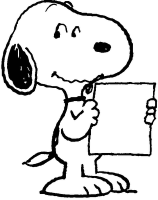There’s an old Peanuts cartoon, where Snoopy is reading a rejection letter which says Please don’t send us any more. Please, please!
With a wry smile, Snoopy thinks, “I love to hear an editor beg.”
That’s one way to handle rejection.
There are others. We all know rejection is part of this crazy business. Whether it’s agent or editor, the default setting is to say No. Which means you have to find a way to handle the inevitable.
The best way is by continuing to write and submit. Here are a couple of quotes I like on the subject:
Let rejection hurt for a half hour, no more. Then get back to your word processor. –Jacqueline Briskin
Never assume that a rejection of your stuff is also a rejection of you as a person. Unless it’s accompanied by a punch in the nose. — Ron Goulart
No matter how many rejections you’ve received, it’s probably not as many as Jack London, who apparently had a whole trunk full. Or Stephen King, who put his on a spike on the wall until the papers were falling off. They persevered to publication.
You can also look through the legions of rejections famous writers have received. The little book Rotten Rejections (Andre Bernard, ed.) has some gems.
A rejection of Tony Hillerman’s first Navajo detective novel: “If you insist on rewriting this, get rid of all that Indian stuff.”
Or this, for George Orwell’s Animal Farm: “It is impossible to sell animal stories in the United States.”
Maybe the most famous rejection was penned by Samuel Johnson: “Your manuscript is both good and original, but the part that is good is not original, and the part that is original is not good.”
So there you go. It’s universal. It happens. The key is how you handle it.
How do you? Does rejection follow you around like a bad smell, or are you able to get past it and back to the keyboard?

